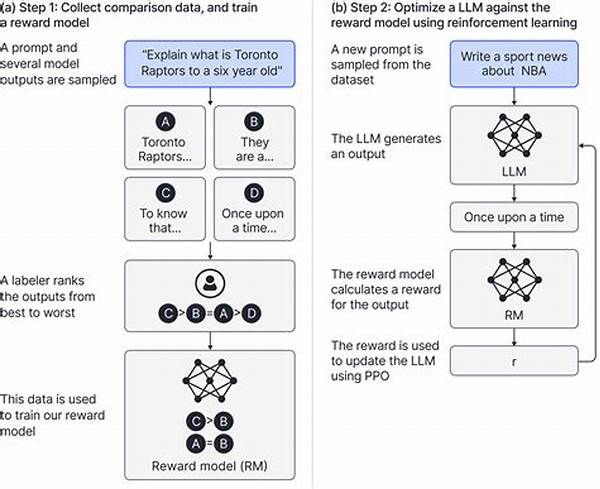In the fast-evolving landscape of artificial intelligence and machine learning, language models for text creation have taken center stage, revolutionizing the way we approach text generation, content creation, and natural language understanding. These sophisticated algorithms are designed to mimic human-like text creation, and their development represents a milestone in computational linguistics and AI-driven content generation. As businesses, marketers, and creators harness the power of language models, it’s essential to understand their capabilities, potential, and the transformative impact they bring to various industries. Whether you are a seasoned professional or a curious mind stepping into the world of AI, grasping the nuances of language models can offer an edge in leveraging technology for effective communication and creativity.
The journey of language models began with the simple aim of understanding syntax and semantics. Over time, they have evolved into highly sophisticated systems capable of generating anything from news articles and blog posts to poetry and scripts. Major breakthroughs, such as OpenAI’s GPT models and Google’s BERT, have pushed the boundaries of what these algorithms can achieve. These developments have opened up a plethora of possibilities for both personal and professional applications, where language models help automate repetitive tasks, enhance creativity, and support decision-making.
As these language models for text creation become more ingrained in our daily lives, concerns about their ethical use, potential biases, and the implications of their outputs on society become inevitable. While the technology is still developing, ongoing research and scrutiny are crucial to ensure that their integration into various platforms is both ethical and beneficial. In this discussion, we’ll explore the multifaceted aspects of language models, from their technical underpinnings to their broad applications and the conversations surrounding their impact on the future of communication.
The impact of language models on industries cannot be understated. They are reshaping how content is produced and consumed, offering personalized content recommendations and enabling more engaging user experiences. For marketers, these models are invaluable tools for understanding audience preferences and creating targeted, personalized campaigns. In journalism, they assist in generating quick, accurate reports, allowing journalists to focus on in-depth analysis and investigative work. The educational sector, too, benefits from tailored content that meets diverse learning needs, fostering better educational outcomes.
The Evolution of Language Models for Text Creation
The evolution of language models for text creation highlights the incredible strides made in AI over the past decade. From early models with limited vocabulary and understanding to today’s state-of-the-art systems handling complex tasks, the journey is nothing short of remarkable. This evolution has not only enhanced machine learning techniques but also expanded our understanding of linguistics and language pattern recognition.
Unlocking the Power of Language Models for Text Creation
Imagine a world where content creation is no longer a tedious task but an exhilarating journey of creativity—this is what language models for text creation promise. Let’s delve deeper into this fascinating domain to understand how these models function, their applications, and the exciting potential they hold for the future.
How Language Models Work
At the core, language models are algorithms trained on vast amounts of text data to predict and generate human-like text. They leverage neural networks, particularly those using transformer architectures, to learn language nuances from data they are fed. This ability to process and produce coherent text sets them apart, making them invaluable tools in various sectors.
Despite their prowess, it’s essential to understand that these models are not without limitations. They operate based on patterns found in the data and may sometimes reflect biases present in that data or generate nonsensical text if not carefully fine-tuned and implemented. Therefore, the challenge lies not just in using these models but ensuring they are trained and monitored with the highest ethical standards to minimize potential misuse and maximize positive impacts.
Applications Across Industries
1. Content Creation: Automated content generation for blogs, articles, and social media.
2. Education: Personalized learning experiences and automated grading systems.
3. Marketing: Targeted advertising and customer service automation.
4. Healthcare: Analyzing patient data for insights and automating reporting.
5. Journalism: Assisting in quick report generation and data-driven stories.
6. Customer Engagement: Chatbots and virtual assistants providing instant, accurate responses.
Overcoming Challenges with Language Models
One of the major challenges in deploying language models for text creation is ensuring data integrity and addressing ethical concerns. Developers need to focus on unbiased training data and transparent model usage guidelines. As the application of these models expands, the focus on ethical AI development will be paramount for sustainable and positive impact.
Goals of Language Models for Text Creation
Visualizing Impact: Illustrations Related to Language Models for Text Creation
In conclusion, the advent of language models for text creation represents a dynamic shift in how we approach language understanding and content creation. With possibilities as vast as the imagination, this transformative technology urges us to embrace innovation while steadfastly committing to ethical practices and responsibilities. As we stand at the intersection of opportunity and caution, the journey with language models is a testament to the power of words powered by artificial intelligence.

